
Image - Wikimedia / David J. Stang
Alpinia is a genus of plants in the Zingiberaceae family that are grown outdoors in most tropical gardens around the world and also indoors.. It has an inflorescence of such bright colors, so happy, and so beautiful that having a specimen is a real wonder.
However, being native to areas with tropical and subtropical climates in Asia and the Pacific, they are very sensitive to coldSo if you live in an area where winter temperatures are cool you will need protection. But that is not a problem: its leaves are very beautiful, so much so that they can be used to decorate the home.
What are the Alpinia like?
Our protagonists are rhizomatous plants that are characterized by having very long leaves, up to 60cm, with small petioles. They form 1m high bushes, very dense. The flowers are grouped in cluster inflorescences, they are fragrant and are composed of herbaceous bracts (false petals), and can be red, white or pink depending on the species. The fruit is a red subglobose capsule.
Its growth rate is reasonably fast if the climate is mild and warm throughout the year. They can grow at a rate of 20-40cm / year if conditions are right. But unfortunately they do not resist the cold, something that is not really a problem since they can be grown indoors.
Varieties or types
There are a number of varieties of Alpinia that you should know, and they are:
galanga alpinia
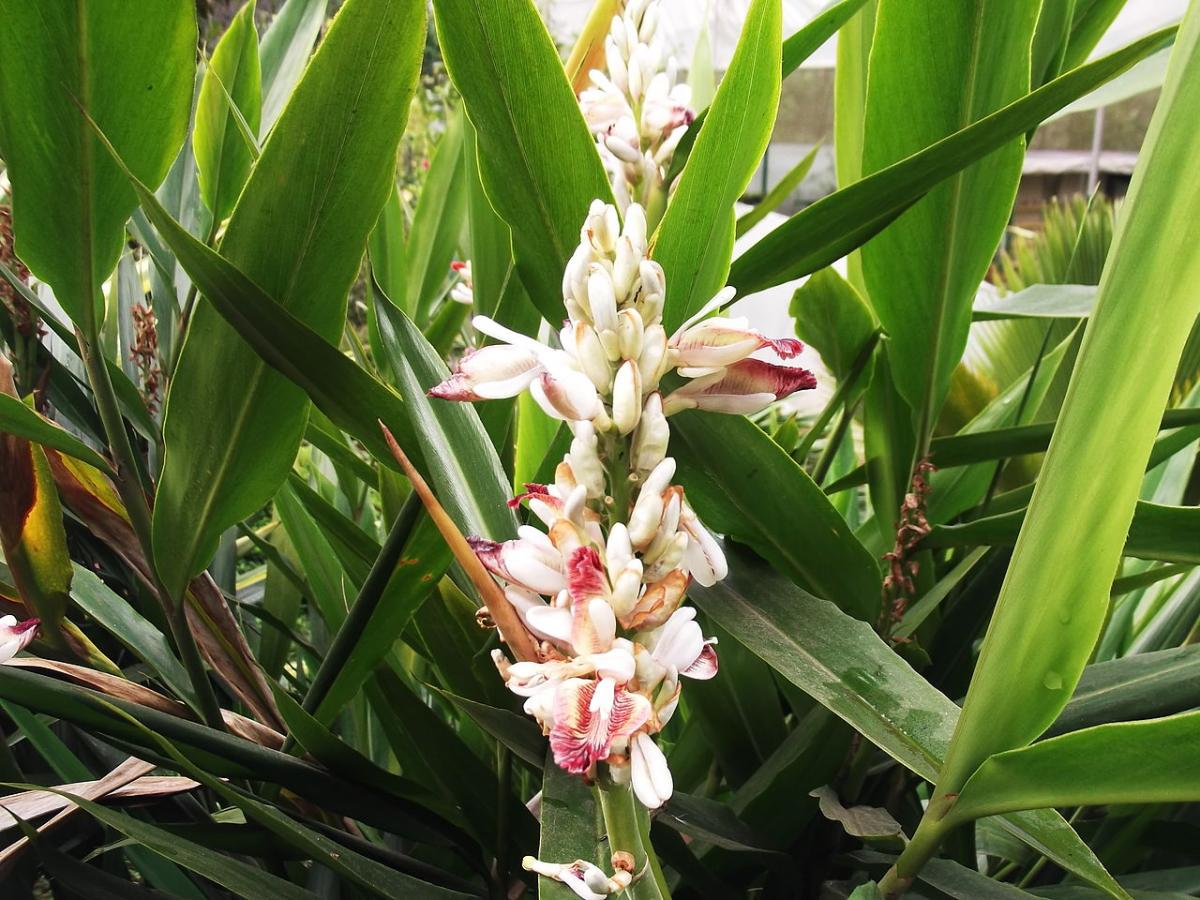
Image - Wikimedia / Yercaud-elango
Known as greater galangal, is a plant that reaches 1,2 meters in height, with leaves up to 30 centimeters in length and white and pink flowers that are grouped in panicles about 20-30 centimeters long.
Alpinia officinarum
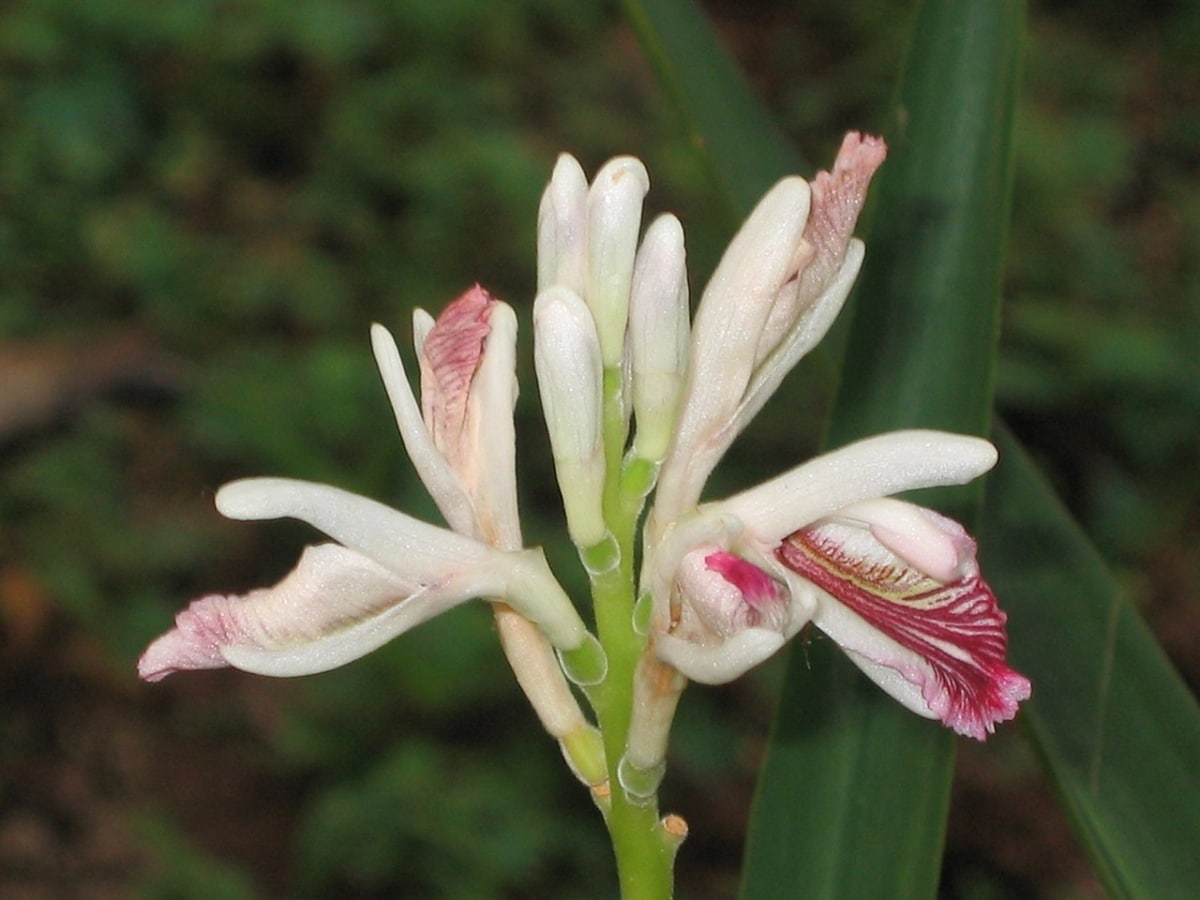
Image - Wikimedia / 阿 橋 HQ
It is the smallest galangal, which reaches a height of between 50 centimeters and 1,20 meters. The leaves are up to 30 centimeters long, and has white flowers and roses that are grouped in terminal panicles of 30 centimeters.
alpinia nutans
- Image - Wikimedia / Syrio
- Image - Wikimedia / David J. Stang
It is called the Brazilian pacoba, and it is a species that reaches a height of 90 to 140 centimeters. Its leaves are about 30 centimeters long, and has white and yellow flowers with an orange center.
Alpinia purpurata
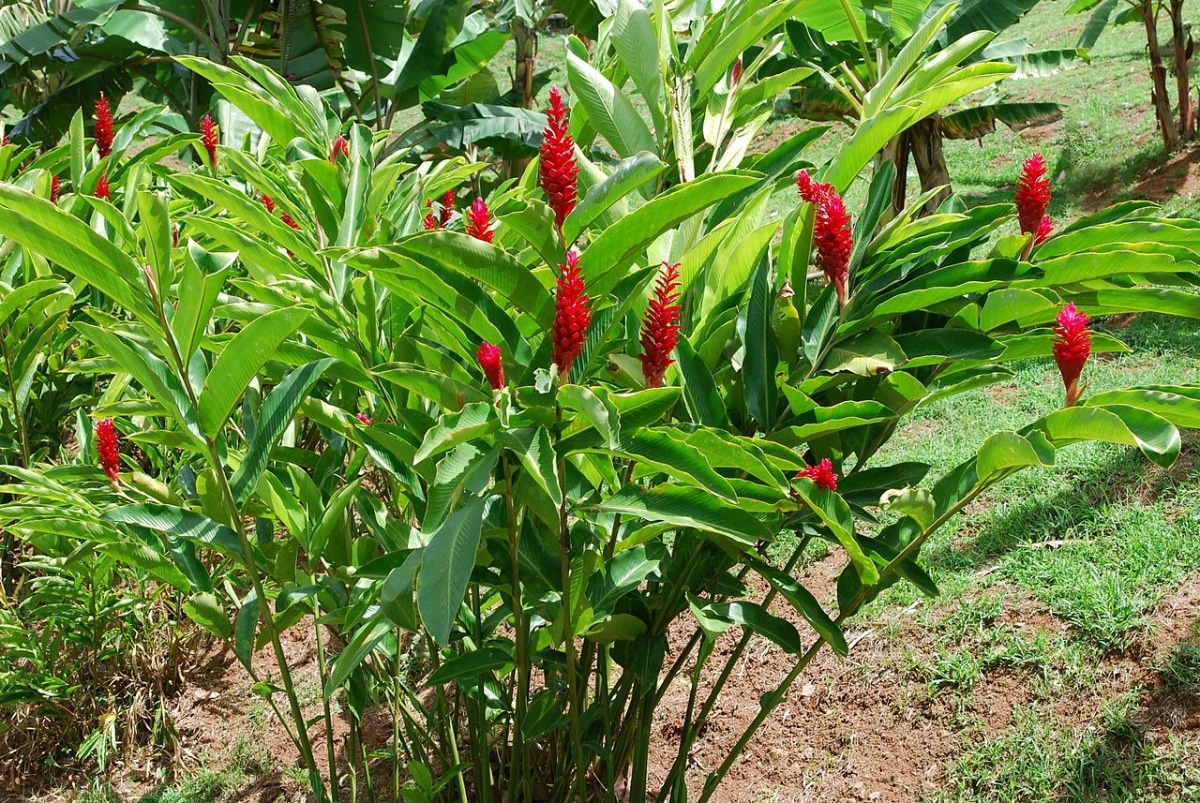
Image - Wikimedia / Pancrat
It is known by the name of platanillo, which can reach a height of between 80 centimeters to 7 meters. Its leaves are large, between 20 and 80 centimeters long, and has a terminal inflorescence of pink color very pretty.
alpinia zerumbet
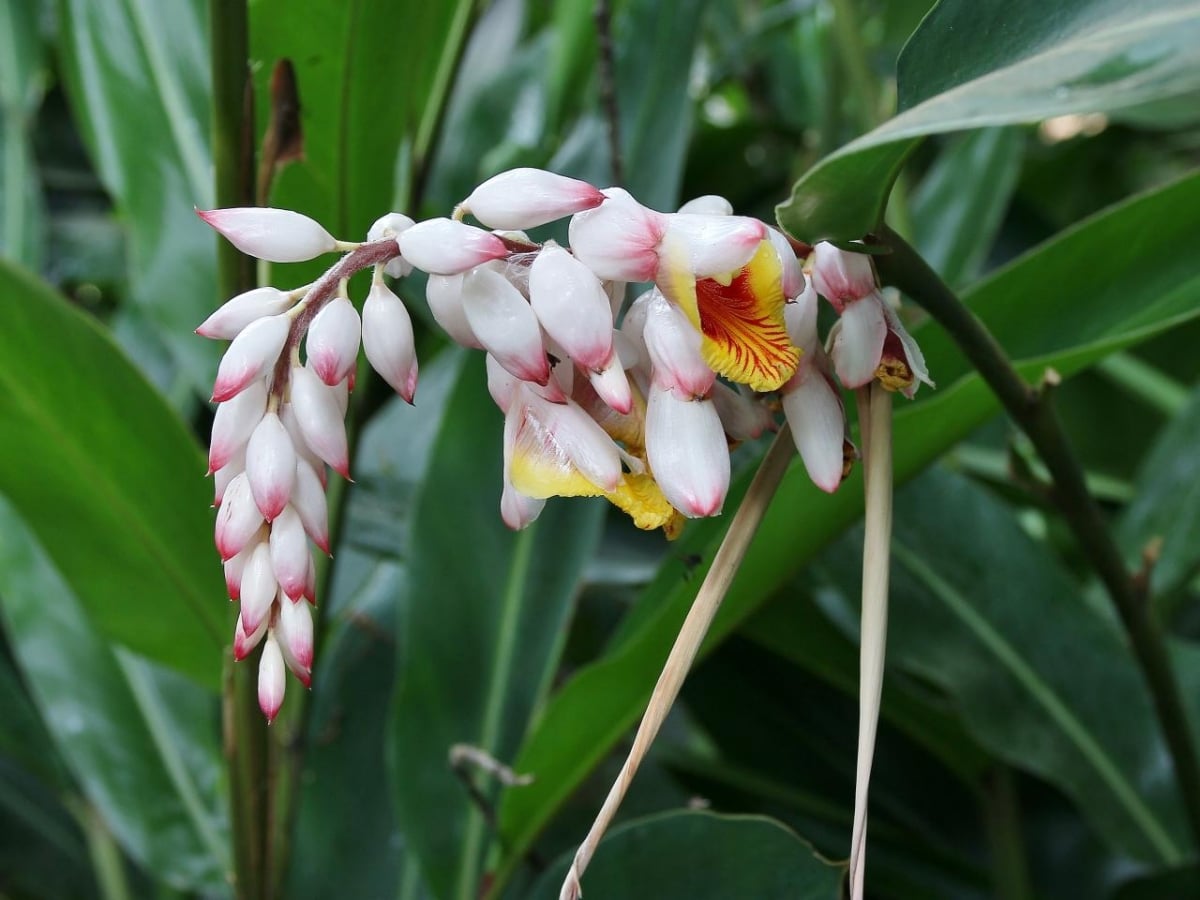
Image - Flickr / Mauricio Mercadante
It is known as the porcelain lily, and reaches a height of between 2,5 and 5 meters. The leaves are up to 70 centimeters long, and the flowers are white and yellow. These appear gathered in clusters of up to 40 centimeters long.
What care do alpinia need?
Would you like to have one in your home? Write down these tips:
Location
The Alpinia needs a lot of light, but if it is kept outside, it must be in semi-shade, protected from direct sun. It is the ideal plant to plant around tree trunks with a highly branched crown, such as that of the flamboyan, or in a pot placed in a covered patio.
Inside, it must be put in a room where there is no lack of light. But it is also important that it is away from air currents, such as those generated by the fan or the air conditioning unit. And in order to avoid burning its leaves, it would not be good to put it in front of the window, since the magnifying glass effect would be produced when the sun's rays pass through the glass and impact against the surface of the same.
Irrigation and humidity
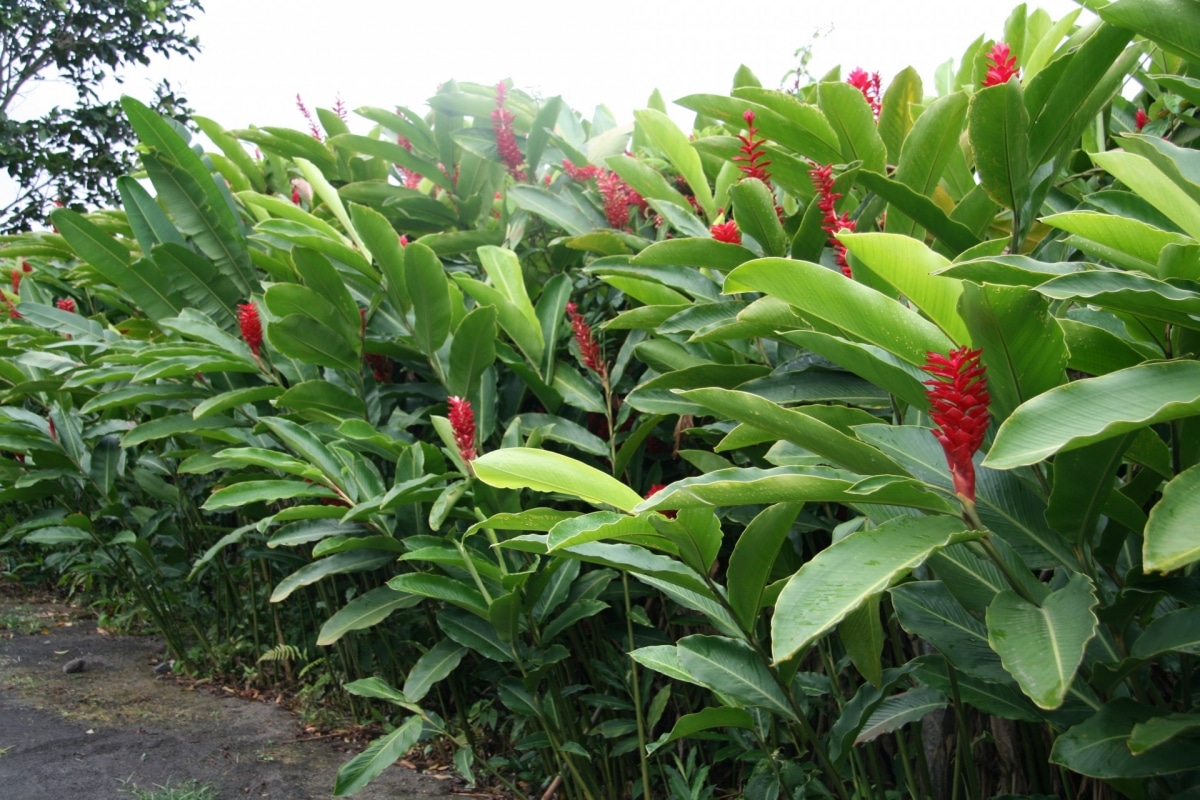
Irrigation It has to be done every 2 days in summer, and every 4-5 days the rest of the year. You have to use rainwater or lime-free, so you will get it to grow well and that its leaves stay healthy.
If we talk about humidity, it must be high. The alpinia is a plant native to jungles where humidity is high, so when it is in an area where it is low, 50% or less, the tips of the leaves dry out.
To avoid this, if it is low in your area, you have to spray it with water daily in summer. The rest of the year we recommend placing containers with water around it, otherwise the leaves could rot.
Soil or substrate
- Garden: it must be loose, rich in organic matter, and with good sewer system.
- Flower pot: it is highly advisable to use a universal growing medium containing perlite (for sale here). This will allow it to root properly, and therefore grow at a good rate.
Planting or transplanting time
Potted alpinia may need a larger one about every 2 to 3 years, depending on how fast it grows where it is. If you see that roots are growing out of the holes in it, or if it has run out of space to continue growing, you will have to plant it in a larger container, in spring.
In case you want to have it in the garden, you also have to wait for that season to arrive.
Subscriber
It is important to pay it during spring and summer. If it is in a pot, it can be paid with guano in liquid form (for sale here), and if it is on the ground with powdered or granulated fertilizers such as earthworm humus or the mulch, always following the indications specified on the package.
Multiplication
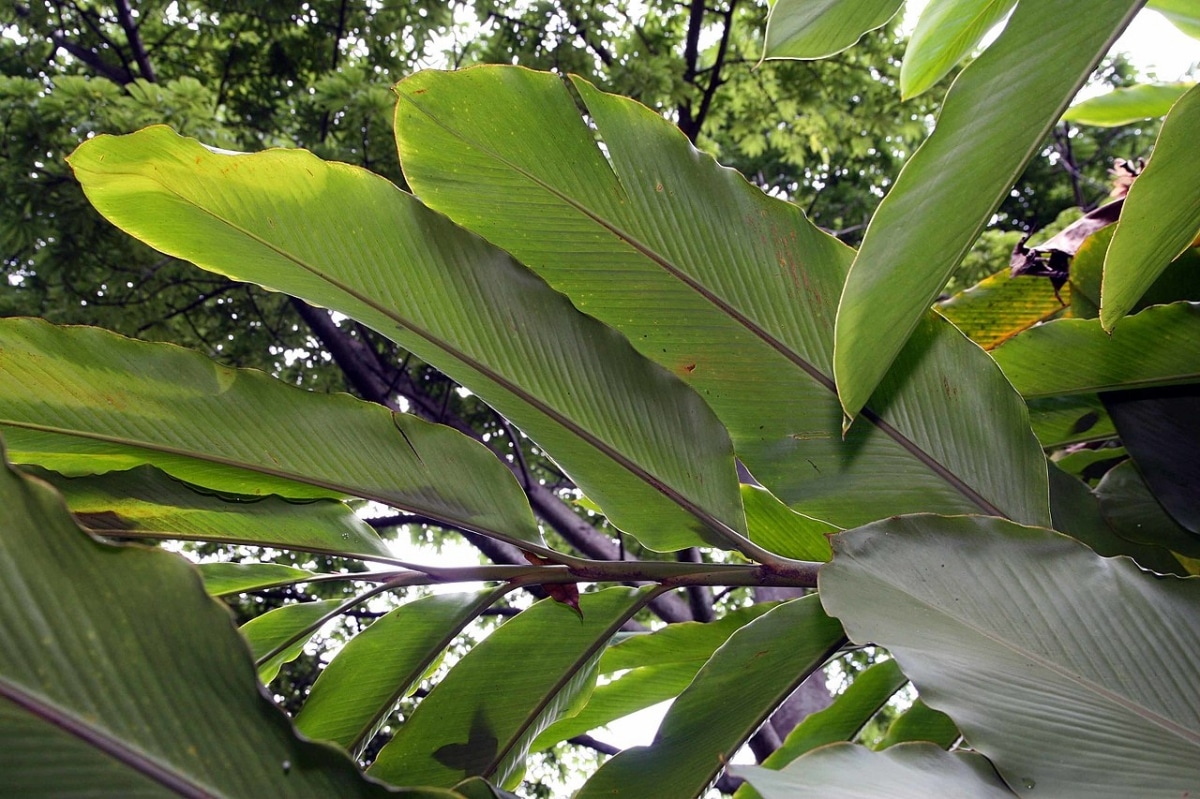
Image - Wikimedia / David J. Stang
The alpinia multiplies by seeds and division in spring. Let's know how to do it:
- Seeds: they must be sown in pots with soil for seedlings (for sale here), in semi-shade, or indoors with lots of light. They have to be covered with a very thin layer of substrate, and then watered with the tray method; that is, putting a plate or tray under the pot and filling it with water so that the soil absorbs it from below. Likewise, it is necessary to provide it with heat, so that if they are indoors it is advisable to put it, for example, on top of the router, or even in an electric germinator (such as this). If they are viable, they will germinate in about a month.
- Division: This method is only valid for plants that have reached a certain size. It takes suckers from a young age, and when they measure about 30 centimeters they can be separated, with care, from the mother plant. To do this, you have to dig up the roots, and proceed to remove them with the help of a hoe, with which, first of all, some trenches will be dug around 30-40cm in order to extract them with as many roots as possible. Then they will be planted in pots and put in semi-shade. To make them root more easily, it is advisable to impregnate the roots with rooting hormones (on sale here) before planting. If everything goes well, in about 15-20 days you will see that they grow.
Rusticity
It is very sensitive to cold. You need protection if the temperature drops below 0ºC.
What do you think?
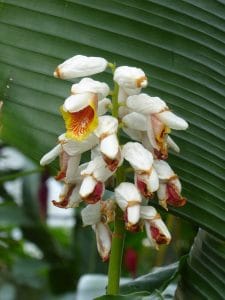
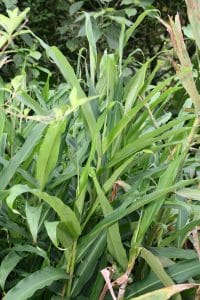
My Alpinias are two months old and are 70 cm tall. I long to see your flowers. I am going to fertilize them, because they are planted on clay soil without organic matter
Hi carlos.
It's okay to fertilize them, but follow the directions on the product packaging. Too much fertilizer could kill them.
Regards!
how long does it take to flower ????? I have had it for two years and it still hasn't blossomed… .thanks.
Hello Teresa.
It may take a long time yes. But for this you need a warm climate all year round, and high humidity.
During spring and summer it can also help to fertilize it with a fertilizer for flowering plants, following the instructions on the package.
Greetings.